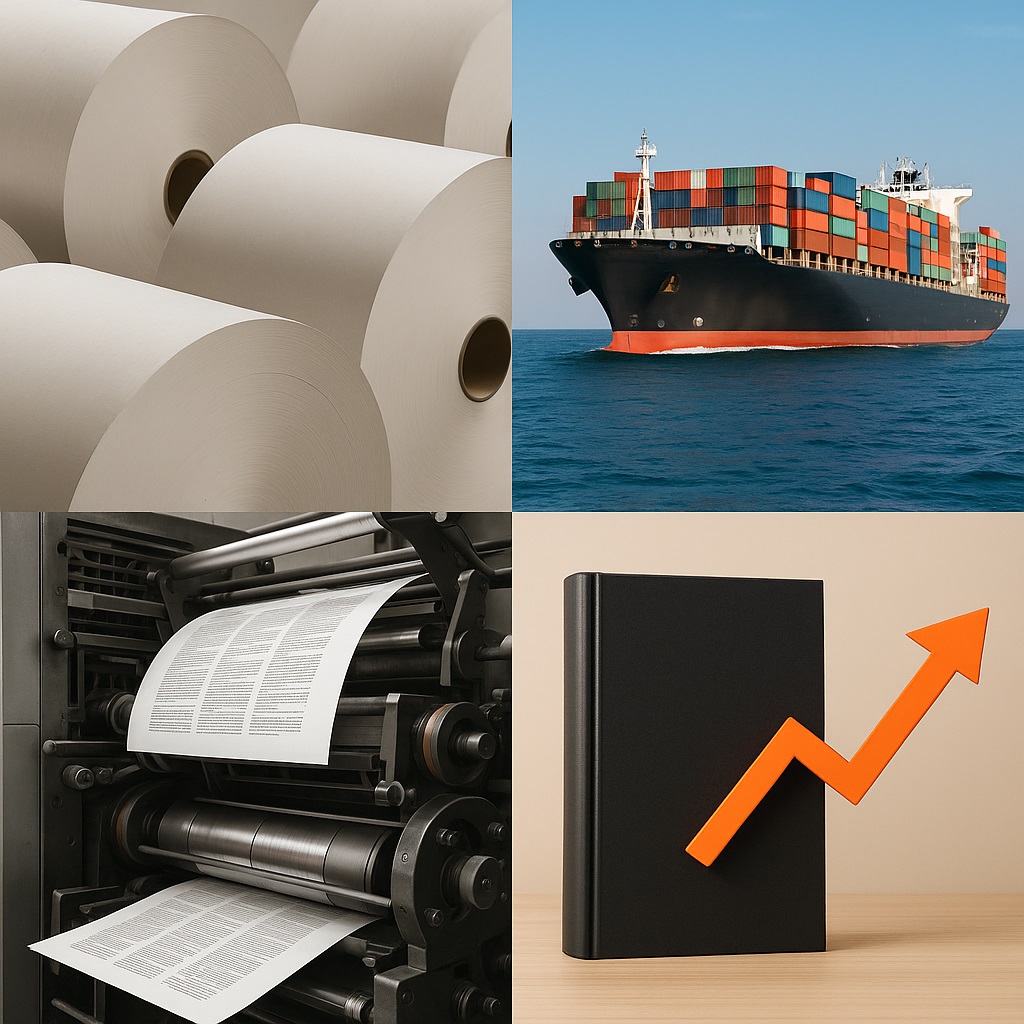Turning the Page: How Tariffs Are Reshaping the Publishing Industry
In 2025, the Trump administration’s aggressive tariff policy has sent shockwaves across nearly every sector of the economy—including the publishing industry. While books may seem immune to the effects of global trade wars, the reality is that rising costs and supply chain disruptions are beginning to ripple through every stage of book production, from printing to distribution. For publishers, authors, and readers alike, it’s time to pay attention.
The Paper Problem
At the heart of many publishing challenges is the humble page. Much of the paper used in U.S. book printing is imported—particularly from Canada and China. With steep tariffs now imposed on many imports, the cost of paper has surged. According to recent industry reports, printers have already begun passing these increased expenses on to publishers, who must decide between raising retail prices or shrinking their margins.
Printing Pressures
The tariffs also impact the printing equipment itself. Many of the presses and binding machines used in the U.S. are manufactured abroad, especially in Germany, China, and Japan. Higher import duties on machinery parts and maintenance components are delaying repairs, driving up costs, and making it harder for small to mid-sized publishers to compete. For indie presses and university publishers, these additional burdens could be financially devastating.
Supply Chain Slowdowns
Books don't just appear on shelves—they are part of a complex global network. Tariffs have compounded existing shipping delays, increased freight charges, and caused unpredictable inventory levels. For international titles, translated works, or global distribution partners, tariffs are causing delays in cross-border collaboration and introducing additional red tape.
Authors Caught in the Crossfire
For self-published authors or small publishing houses that rely on overseas printing to keep costs low, the tariffs represent a sudden and sharp hurdle. Print-on-demand services that use foreign facilities may pass increased costs directly to the author or reader. Meanwhile, authors attempting to reach international audiences may face reduced access due to retaliatory tariffs abroad.
The Digital Dilemma
Some may argue that eBooks and audiobooks offer a solution—but even the digital realm isn’t entirely safe. Tariffs on tech equipment, cloud services hosted overseas, or software subscriptions used by the publishing industry can introduce hidden costs. Moreover, with higher prices for printed books, consumer demand may shift unpredictably, further destabilizing the already tight margins on digital content.
What Can Be Done?
The publishing industry must brace for continued volatility. Here are a few strategies:
-
Diversify suppliers: Seek out domestic paper and print vendors where possible.
-
Invest in digital infrastructure: Strengthen eBook and audiobook capabilities to weather physical supply chain disruptions.
-
Advocate for the arts: Industry professionals should collaborate with trade organizations and lobby against tariffs that disproportionately hurt cultural production.
-
Educate consumers: Transparency about why book prices are rising could foster greater understanding and support from readers.
Tariffs are often used as tools of economic warfare, but their collateral damage can extend far beyond factories and farms. In the publishing world, they affect the accessibility of knowledge, the affordability of books, and the ability for new voices to be heard. As these policies continue to unfold, the publishing industry must adapt quickly—or risk being rewritten by forces outside its control.
